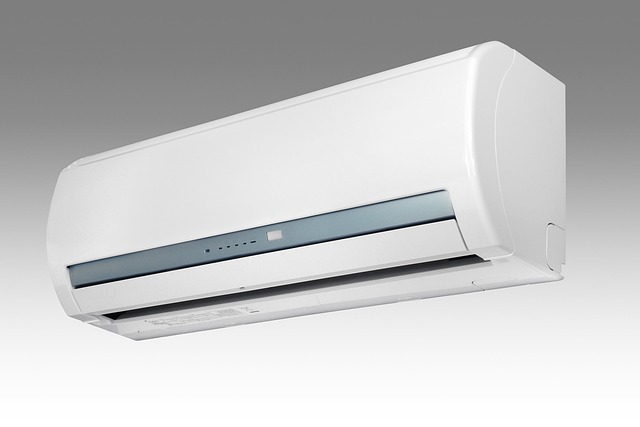How Heat Pumps Work: Efficient Home Heating & Cooling
Explore how heat pumps provide year-round comfort by moving heat instead of creating it. This practical guide compares air-source, geothermal, and water-source systems, explains energy savings, installation and maintenance needs, and outlines costs and cold-weather performance so homeowners can pick the most efficient HVAC option.

Heat pumps offer a flexible and energy-conscious alternative to traditional heating and cooling systems by transferring heat between indoors and outdoors rather than producing it directly. Because they move thermal energy instead of relying on combustion or pure electrical resistance, heat pumps typically deliver substantial efficiency gains and reduced greenhouse gas emissions, making them an appealing choice for both new construction and retrofits.
Types of heat pumps and how they differ
Air-source heat pumps are the most common option. They extract heat from outside air during the heating season and expel indoor heat to the outdoors in summer. Available as ducted systems or ductless mini-splits, air-source units are generally more affordable to install and suitable for a wide range of homes and climates.
Ground-source systems, commonly called geothermal heat pumps, draw heat from the earth where temperatures remain relatively stable year-round. Loops of buried piping circulate a fluid that exchanges heat with the ground. Geothermal systems often have lower operating costs and longer service lives but come with higher upfront costs and require enough land or specialized drilling for loop installation.
Water-source heat pumps use nearby bodies of water such as wells, lakes, or ponds as the heat exchange medium. Where a reliable water source exists, these systems can be highly efficient because water temperatures tend to be steady. Their use is limited, however, by site-specific regulations and access to suitable water resources.
Each type presents trade-offs. Air-source units are easier and cheaper to install, ground-source systems typically yield better long-term savings and durability but higher initial expense, and water-source units can be excellent performers when suitable site conditions are present.
How heat pumps save energy
A major benefit of heat pumps is their coefficient of performance, or COP. Many modern heat pumps deliver roughly 3 to 4 units of heat for every unit of electricity consumed, which corresponds to 300 to 400 percent efficiency. By comparison, electric resistance heating converts electricity to heat at about 100 percent efficiency.
This difference can translate into meaningful energy bill reductions, especially in moderate climates where heat pumps run near peak efficiency. Actual savings depend on local electricity prices, the fuel being replaced, correct system sizing, and the home’s insulation and air-sealing. Integrating efficient building practices and smart controls further improves performance and reduces annual energy use.
Installation considerations and routine maintenance
Professional installation is crucial to achieve reliable, efficient operation. Qualified installers perform a detailed load calculation to match the heat pump to the home’s thermal needs, position indoor and outdoor components for optimal airflow, and set proper refrigerant charge and airflow rates. Incorrect sizing or sloppy installation can degrade comfort, increase energy use, and shorten equipment life.
Homeowners can preserve efficiency through basic maintenance: clean or replace filters on schedule, keep outdoor coils and condensers free of leaves and debris, and ensure unobstructed airflow around both indoor and outdoor units. Service technicians should periodically check refrigerant levels, tighten electrical connections, verify defrost controls, and inspect safety systems. Many professionals recommend at least one annual service visit to identify and rectify issues early.
Costs, operating expenses, and return on investment
Upfront and operating costs vary widely by system type and site conditions. Factors that influence total cost include equipment size, local labor rates, any required ductwork or ground loop installation, and the availability of incentives such as utility rebates or tax credits. When evaluating return on investment, consider energy savings over the equipment lifespan, expected maintenance costs, and available financial incentives.
| Heat Pump Type | Average Installation Cost | Annual Operating Cost | Typical Lifespan |
|---|---|---|---|
| Air-Source | $4,500 - $8,000 | $500 - $1,000 | 10-15 years |
| Ground-Source | $10,000 - $30,000 | $300 - $700 | 20-25 years |
| Water-Source | $8,000 - $15,000 | $400 - $800 | 15-20 years |
Prices, rates, or cost estimates mentioned in this article are based on the latest available information but may change over time. Independent research is advised before making financial decisions.
Climate performance and cold-weather operation
Heat pump performance is influenced by outdoor conditions. While new cold-climate models can operate efficiently down to around -15F, system output and efficiency decline as temperatures drop. In very cold regions, many homeowners pair a heat pump with a supplemental heat source, such as a gas furnace or electric resistance elements, to maintain comfort during extreme cold snaps.
Advances in compressor technology, refrigerants, and controls continue to improve low-temperature capability, broadening the climates where heat pumps are practical. Proper system sizing combined with good insulation and airtight construction reduces reliance on backup heating and enhances overall comfort and efficiency.
Making the right choice for your home
Selecting the appropriate heat pump depends on climate, property characteristics, budget, and sustainability goals. For many homes, air-source heat pumps are the most cost-effective entry point. Geothermal systems may offer superior lifecycle savings when property and budget permit ground loop installation, while water-source units excel where a suitable water resource is available.
To make a well-informed decision, obtain multiple quotes, check installer credentials and references, and investigate available incentives and rebates that can offset upfront expense. Improving home insulation, sealing air leaks, and using programmable thermostats will maximize savings and extend equipment life.
Final thoughts
Heat pumps are becoming a central technology for efficient residential climate control. Their ability to deliver both heating and cooling with high efficiency, along with lower carbon emissions when paired with cleaner electricity, makes them a strong long-term investment. As technology and incentives continue to evolve, heat pumps are an increasingly practical option for homeowners seeking comfort, reduced energy costs, and a smaller environmental footprint.





